 |
|
| Issue #149 • September/October, 2014 |
While growing up in Detroit, we had no nut trees in our yard (though we did have seedlings before I left home). That didn’t stop my parents, though. In the fall, on weekends when Dad was off work, we’d gather up burlap bags, load up in the station wagon, and head for the country. Some of my best childhood memories include driving down dirt country roads, trying to be the first to spy nut trees on the roadside. In Michigan, both shagbark hickory and black walnut are common in the wild.

Black walnut trees are easily recognizable by their tropical-looking leaves. They can grow very large.
Upon finding a tree, we’d hop out and begin picking up nuts and tossing them into our burlap sacks. We’d often fill several sacks. Then, come late fall and winter, we’d sit around the table and shell nuts, picking out nutmeats for Mom to use in all manner of baked goods.
Unfortunately, in some areas you can’t find wild nut trees so if you’re going to have nuts on your table, you need to plant the trees on your homestead. There are dozens of varieties of nut trees available to plant, depending on your growing zone. But no matter where you live, you can grow some kind of nuts.
Black walnut
These large, heavy nuts are not only hardy but very tasty, too. The trees are quite easy to grow. The squirrels helped themselves to our pile of walnuts laid out in the driveway to husk, effectively planting their own walnut trees. When I left home, we had several black walnut seedlings that were higher than my head and headed skyward.
If you have a source of black walnuts (wild trees or a neighbor), you can simply harvest a few in the fall and plant them in a protected spot on the edge of your yard. Mark the spot so you won’t lose the baby tree. Then watch in the spring for your new tree to sprout. Don’t plant a black walnut near your garden or flower beds as the mature trees shed a chemical (juglone) that is toxic to plants beneath the tree. And don’t plant walnut trees where they will drop their nuts on your car, patio, or sidewalk they are heavy and will dent a car and stain your walkway or patio.
Like any seed-grown fruit, black walnuts grown from seed may or may not be wonderful nut producers. For this reason, most people plant named varieties or grafted trees from nurseries, selected for their quality of nut production. Black walnuts should be planted in good soil, in an area receiving plenty of sunshine and where this potentially large tree can grow unfettered.
Most good black walnuts will begin producing in 6-7 years. You don’t need to pick the walnuts; wait until they drop naturally from the tree. Black walnuts grow inside a thick, green husk. The nut itself is round and very rough. When I was young, I tried husking these nuts by hand. Yeah, it worked, but black walnut husks contain a potent stain and my hands would be dark brown for days. (Try explaining that to your Detroit-bred school teacher!)
Instead, we’d lay the nuts out in the driveway, put on our old shoes, and stomp the green husks off the nuts. No, the nuts do not crack. We’d even run the car back and forth over them which effectively husked the nuts. It smashed a few nuts in the process, but it was a quick way to get them husked before the gray squirrels carried them off.
It’s a good idea to leave the husked nuts in a single layer to dry so they don’t mold in bags or piles in storage. Use thick gloves to pick the husked nuts up, as they are very thickly coated with brown dye. Once dry, sack up the husked nuts to shell later during the winter.
Black walnuts are hard to crack and retrieve the meats from. This is why few are available commercially and those nutmeats are extremely high-priced. But we homesteaders are a sweat-equity sort of critter and I know I get great satisfaction from eating gourmet food right from our homestead.
To crack black walnuts, take the nut and lay it on its side and lightly hit it all over with a hammer (when I was a kid, we used a piece of railroad rail or Dad’s big vice with the jaws closed). You just want to “soften” or lightly crack the nut, not break it open. Then sit it on end and tap the end with your hammer. The nut will crack in half, exposing large pieces to pick out, using a nut pick to remove the other pieces. It really goes quite quickly. It is a good idea to wear safety glasses as sometimes those sharp little pieces will fly, especially if you get a little heavy-handed with the hammer. With experience, you can harvest a bowl of nutmeats in an hour’s time.
Don’t do this in the living room or kitchen; we used the garage as it is often a messy process. But two or more people sitting around visiting or listening to the radio makes this process enjoyable.
Black walnuts are hardy from Zones 4-9 and can even grow in Hawaii. In arid climates they do need to be irrigated.

English walnuts are harvested as the nuts begin to show in split husks
English walnuts
English walnuts, often called California walnuts, are the walnuts you usually see and buy in the store. They originally came from Persia (Iran), and arrived in England centuries later.
The flavor of English walnuts is much milder than their cousin, the black walnut, and they are also much easier to harvest and crack. They are hardy from Zones 5-9. Luckily, the Carpathian walnut, a variety of English walnut, is hardy in Zone 4, which makes walnuts available for planting to many more homesteaders.
Like the black walnut, you can plant them from seed in the fall, but you’ll have a quicker crop of nuts that are sure to be large and sweet if you buy a named seed variety or grafted tree. English walnut trees emit juglone, so don’t plant an English walnut in your garden. Don’t plant them where the nuts will drop on your vehicle, patio, or driveway.
English walnuts are harvested as the nuts begin to show in split husks they will often fall to the ground naturally. A few good shakes of the tree by hand will cause most of the ripe nuts to fall as well. (Protect your head from falling nuts!)
Luckily, as the husks of these nuts split open when the nut is ripe, they are easy to husk by hand. But the husks will stain, so use heavy gloves or expect brown hands that will not come clean any time soon. After husking, lay the nuts out to dry in a protected location for two weeks. English walnuts are easy to crack by hand or with a hand-held nut cracker. Faster yet is a leverage-type nut cracker where you sit the nut down and pull the handle forward to crack the nut.
Butternut
The butternut is related to walnuts although it is a bit hardier and smaller. It is very tasty and worth planting in your nut orchard or backyard. Like the walnut, butternuts secrete the chemical juglone, which is toxic to plants beneath it, so don’t plant it in your garden. As the nuts are fairly large, don’t plant it over your patio or sidewalk or where you park your car.
Butternuts are sweet and not as strong-tasting as black walnuts. As the nut ripens, the green husk usually splits, releasing the nut. If this does not happen, you can remove the husk by stomping it on firm ground. If you pull the husks off by hand, be sure to wear gloves. The husk and nut will stain your hands.
The butternut is a medium-sized tree, often taking years to reach a mature height of 50 feet or so. It begins to produce nuts in about 4-6 years. The nuts are oval with a point on the end, dark colored, and rough textured.
They are a wild, native tree found in the northeast United States. Butternuts are hardy from Zones 4-8 but have been known to survive in some Zone 3 climates.

The pecan nut grows inside a green husk that turns brown on ripening and splits open, releasing the smooth-shelled nut.
Pecans
Pecans are easy to grow at home, so you don’t have to pay through the nose for all those pecan pies, pecan rolls, and other tasty baked goods.
Pecan trees are native to the south-central United States. But the pecan is hardy in Zones 6-9, although there is a pecan available commercially that is hardy clear into Zone 5.
There are many different varieties of pecans available for planting from mail-order and online nurseries, most having thin shells and large nutmeats with very good flavor. The pecan is a large tree and will begin bearing about six years after planting.
The pecan nut grows inside a green husk that turns brown upon ripening and splits open, releasing the smooth-shelled nut. They are very easy to harvest and only require shelling to use or put up in storage.

Hickory nuts grow in a thick husk that splits when the nuts are ripe, revealing a smooth oval nut with a pointy bottom.
When we lived in New Mexico, my friend Juanita got permission to pick pecans in a commercial orchard where her son was cutting dead trees so the orchard could renew their plantings. She came home with burlap sacks full of pecans and invited me to come over when I could and help shell them for half of the take. We spent dozens of afternoons visiting at her kitchen table while cracking and picking nutmeats. Both of us were avid canners so we ended up with endless pints of wonderful pecan meats. That was more than 17 years ago, but we still have some of Juanita’s wonderful pecans to remember her by.
You can expect pecans to begin setting nuts when they are about 3-5 years old. Mature pecan trees are large trees, often clearing 100 feet in height, so allow plenty of room for them to grow.
Hickory nuts
On my family’s childhood nut foraging trips, we always brought home plenty of hickory nuts. Like pecans, hickory nuts (both shagbark and shellbark) grow in a greenish husk which splits and ejects the nuts when they are ripe. The nuts range in size from about the size of the end of your thumb to nearly two inches in diameter. They are heart-shaped with a point on the bottom and are quite easy to crack to extract the meats. You will need a hammer or lever action nut cracker as the shells are fairly hard. I prefer a hammer, striking the nut’s side about halfway to the stem end. With one good tap, the shell will crack without shattering the nutmeat. After that, it’s easy to pick out the large pieces of nutmeat with a nut pick.
Hickories are hardy from Zones 4-8 and are native to much of the eastern part of the U.S.
The hickory is a large tree, often growing more than 100 feet tall, so be sure to allow plenty of space when planting. The tree is vase-shaped and the common shagbark hickory has very attractive shaggy bark.
Although wild hickory trees do provide lots of nuts, many domestic species have been bred as well as grafted hybrids giving larger nuts and faster growth/nut production.

Chestnuts grow inside groups of prickly burrs which split open, revealing shiny, flattish nuts when they become ripe.
NOTE: The top photo was inadvertently included
in the print issue (#149) . We apologize for the error.
Hickory nuts taste almost like pecans, but because they cannot be commercially cracked and picked, you’ll never find hickory nut meats on a grocer’s shelves.
Chestnuts
Everyone has heard the song lyrics “chestnuts roasting on an open fire” at Christmastime, but few have actually eaten chestnuts. This is because native chestnuts, once common throughout the eastern portion of the U.S., were largely killed in the early 20th century by a fungal infection called chestnut blight. Very few trees were spared. Today, there are more chestnuts being grown, often in isolated locations on farms and homesteads.
Chestnuts are hardy from Zones 4-8 and make a large, attractive yard tree, reaching about 40 to 80 feet tall. Besides the native American chestnut, from which strains of partially blight-resistant seedlings have been created, there are also hybrids and other blight-resistant chestnuts available for sale including the Chinese, Seguin, and Korean chestnut.
Chestnuts grow inside groups of prickly burrs which split open, revealing shiny, flattish nuts when they become ripe. These nuts fall to the ground and may be harvested.
The chestnut is very easy to get out of its shell as the shell is pliable and relatively thin, sort of like the shell of an acorn. Once harvested and cleaned of their burrs, the nuts can be laid out in a single layer to dry and cure for a week or so, protected against squirrel theft. Then the nuts may be stored for a few months in a cool, dry location. You may shell them anytime after drying, but be sure to either use, freeze, or can them so they don’t become rancid.
These nuts are very large and sweet. They are especially good after being roasted. Spread the nutmeats out in a single layer on a cookie sheet and roast at 200° F in the oven until golden, turning them occasionally to prevent scorching.

Almonds have fragrant blooms in early spring.
Almonds
Almonds have been around for a long time. They were first domesticated in the Middle East and India as far back as 3,000-2,000 B.C. As they are native to a Mediterranean climate, almonds are hardy from Zones 5-9, depending on variety.
Small and airy, the almond tree resembles a peach tree. It has fragrant pink blossoms in the spring, making it an attractive yard tree. The almonds grow inside a green husk which splits open to reveal the nut on ripening. The almond nut is soft-shelled and easy to crack with a hand-held nutcracker.
Almond trees will usually grow between 12 and 20 feet tall, but can easily be pruned to smaller dimensions.

Editorial Coordinator Lisa Nourse successfully grew a filbert crop last year. She is expecting a larger crop this year, if she can beat the squirrels!
Filberts and hazelnuts
Hazelnuts are native to much of the U.S. Fortunately for us, the hazelnut is hardy where we homestead and is (so far!) our only dependable nut crop.
The biggest problem we have in harvesting wild hazelnuts is beating the squirrels. We cannot wait until the nuts are totally ripe, or the squirrels will strip every bush in the area overnight, leaving only the wormy nuts for us.
Instead, we harvest the nuts as soon as the bunches of nut burrs are turning brown. We bring the burrs in and lay them out in a single layer to cure and dry in a protected area. After about two weeks’ time, the nuts can then be removed from the husks and further cured.
American and Beaked hazelnuts are hardy from Zones 3-8 and grow on tall, multi-trunked shrubs rather than trees. Hazelnuts make an attractive “wild” hedge for a property line or yard.
European filberts are a larger cousin but, unfortunately, not as hardy. They grow in Zones 5-8 and produce a great bounty of large, sweet nuts.

White oak acorns are sweeter and require little, if any, leaching to be edible.
Acorns
While the acorns of most oaks are edible, many contain a good deal of tannins which render the acorns very bitter to the taste.
You can do as the Native Americans did and leach the tannins out by repeated soaking in fresh water, dumping the water, and re-soaking the acorns. But it is much easier and faster to plant or harvest more edible acorns.
Generally, the white oak family has the sweetest acorns, requiring very little (if any) leaching. These oaks include the white oak, burr oak, chestnut leaf oak, and turkey oak. There are also many selected seedling trees and hybrids developed for human consumption, so if you want to plant some oaks to harvest the acorns for food, you have many different trees available.
Oaks are all beautiful trees to have around and most are hardy from Zones 3-9, depending on the variety. The acorns develop all summer and fall to the ground without a husk when ripe, making picking and shelling very easy. Acorn shells are pliable and thin.
As with all nuts, it’s a good idea to dry the nuts for a week or so in a single layer in a protected environment, so they don’t mold in storage.
Planting nut trees
Sources for nut
or citrus trees
Fedco Trees
PO Box 520
Waterville, ME 04903
207-426-9900
www.fedcoseeds.com
Oikos Tree Crops
PO Box 19425
Kalamazoo, MI 49019-0425
269-624-6233
www.oikostreecrops.com
J.W. Jung Seed Co.
335 S. High Street
Randolph, WI 53956
800-297-3123
www.jungseed.com
Logee’s Greenhouses
141 North St.
Danielson, CT 06239
888-330-8038
www.logees.com
Raintree Nursery
391 Butts Road
Morton, WA 98356
800-391-8892
www.raintreenursery.com
St. Lawrence Nurseries
325 State Hwy 345
Potsdam, NY 13676
315-265-6739
www.sln.potsdam.ny.us
Stark Bro’s Nursery
PO Box 1800
Louisiana, MO 63353
800-325-4180
www.starkbros.com
Nut trees are basically planted as you do any other fruit tree. The one exception is that most nut trees have a very long tap root. Never cut it off or crowd it in your planting hole. This will either kill the tree right off or will severely stress and set the tree back, often killing it later. Nut trees are most often planted in the spring, with the exception of some coastal northwest locations where fall planting has better results, due to fall rains.
While most nut trees are self-pollinating, two or more trees will ensure a successful and bountiful harvest.
Protect your seedling or young tree from being eaten by rabbits and deer by enclosing the tree in a circle of hardware cloth reaching from the ground up to four feet tall or more. After that, your tree should be able to fend for itself.
While you are waiting for your own trees to become large enough to bear, you might check out the roadsides in the country near your homestead. You can often find wild nut trees growing along the road that you can harvest. If you find some growing inside a fence, always ask the landowner’s permission to enter and harvest the nuts. Most folks are happy to have you “clean up that mess,” especially if you give them a basket of nuts when you leave. But have the courtesy to ask; it avoids unpleasant situations for all concerned.
Another possibility is finding nut trees growing on state or federal land, where you are free to harvest.
Preserving nuts
While you will certainly use many of your nuts fresh after harvesting, you must do something to prevent them from becoming rancid, due to the oils. While you can certainly package and freeze the nutmeats, a more long-lasting solution is to can them.
Canning nuts is so easy. All you do is lay the fresh nutmeats (pieces or whole) out on a cookie sheet and place in your oven at 250° F. Toast the nuts, stirring once in a while to prevent scorching, until they are lightly browned and thoroughly heated.
Place in hot half-pint or pint canning jars, leaving one inch of headspace. Place a hot, previously-simmered dry lid on the jars and screw down the rings firmly tight. Process in a pressure canner at 5 pounds pressure for 10 minutes. If you live at an altitude above 1,000 feet, consult your canning book for directions on increasing your pressure.
Once canned this way, your nuts will remain good for years to come.
Recipes
Nutty refrigerator cookies
1 cup butter, softened
1 cup sugar
2 Tbsp. milk
1 tsp. vanilla extract
2½ cups flour
½ cup chopped nuts (Mom used black walnuts)
In a large bowl, cream butter and sugar until light and fluffy. Add milk and vanilla. Gradually add flour and mix well. Fold in the nuts. Shape dough into two 8×2-inch rolls, wrap in waxed paper, and put into refrigerator or freezer.
To bake cookies: Unwrap dough (if frozen, let it sit at room temperature for about 10 minutes) and cut into ¼-inch slices. Place 2 inches apart on ungreased baking sheets. Bake at
375° F for 10-12 minutes or until lightly browned. Cool on wire racks. Yield: about 7 dozen.
Black walnut pie
1 baked pie shell
1 cup firmly-packed brown sugar
1 Tbsp. melted butter or margarine
3 Tbsp. cornstarch
1/8 tsp. salt
1½ cups milk
2 egg yolks, beaten; whites reserved
½ cup black walnut pieces
2 egg whites
Combine sugar, butter, cornstarch, and salt in a saucepan and heat gently. Add milk slowly, stirring constantly until smooth. Add beaten egg yolks and cook one minute, stirring constantly to avoid scorching. Add black walnuts and vanilla. Beat egg whites until stiff, then fold into hot mixture. Pour into baked pastry shell. Bake at 400° F until filling is set. This is great with vanilla ice cream.
Lemon almond bars
Crust:
½ cup butter or margarine
¼ cup powdered sugar
1 cup flour
Combine butter with powdered sugar until smooth. Slowly mix in flour. Spread evenly in bottom of an 8x8x2-inch square baking pan. Bake at 350° F for 10 minutes.
Filling:
2 eggs
1 cup sugar
1¼ cups flour
1 tsp. grated lemon peel
2 Tbsp. lemon juice
½ cup ground toasted almonds
Combine filling ingredients, mix well, and pour over the crust. Bake an additional 20 minutes. Cool completely in the pan on a wire rack. Sprinkle top with powdered sugar; sprinkle through a paper doily for a pretty pattern. Cut into squares.
Cinnamon caramel pecan rolls
¾ cup scalded milk
¼ cup sugar
1 Tbsp. shortening
1 egg
1 pkg. dry yeast (2¼ tsp.)
3 cups flour
½ tsp. salt
Filling:
½ cup brown sugar
2 tsp. cinnamon
softened butter
Topping:
¾ cup brown sugar
3 Tbsp. butter or margarine
2 Tbsp. corn syrup
½ tsp. vanilla
chopped pecans
Mix hot scalded milk with sugar and shortening. Cool to lukewarm. Add beaten egg and yeast. Add flour and salt. Mix well. Knead in enough flour to make a dough that you can handle but not a stiff dough. Let rise in a covered bowl until doubled. Punch down and roll out into a rectangle about 1/2 to 3/4 inch thick.
Make filling: Mix brown sugar and cinnamon. Rub softened butter onto the dough rectangle and spread the filling on top evenly.
Make topping: Mix all ingredients except pecans and spread on the bottom of a 13×9-inch greased pan. Sprinkle liberally with pecans.
Roll the rectangle up, jelly roll fashion, lengthwise, then pinch the ends shut. With a sharp knife, cut the roll into pieces about an inch thick and lay them on top of the topping in the pan (it’s the bottom now!).
Bake rolls at 425° F for 15-20 minutes. Turn out onto cooling racks when hot, removing them from pan.
Spiced nuts
1 egg white
1 Tbsp. water
¼ tsp. salt
½ tsp. cinnamon
½ cup sugar
1 quart pecans, walnuts, or other nut halves or large pieces
Beat egg white until frothy, then add water, salt, cinnamon, and sugar. Mix well, then stir in nuts. Pour out onto a cookie sheet in a single layer and bake at 250° F for one hour, stirring several times during baking.


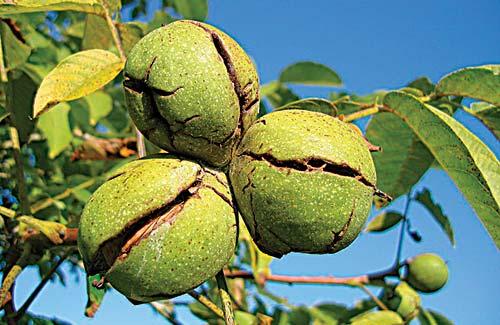
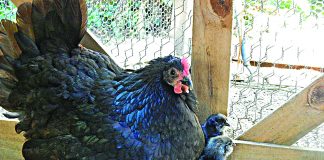





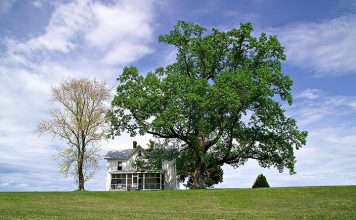


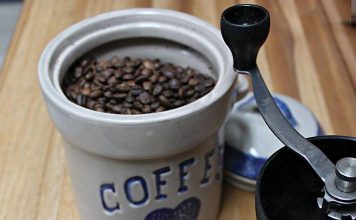
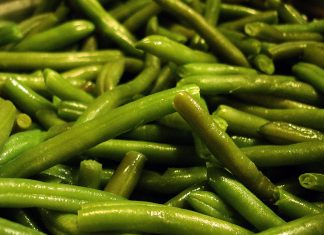
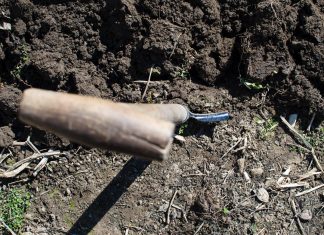
For those who have woodstove heat, use it for drying walnuts, and all nuts. Not by putting the cookie pan filled with nuts ON the woodstove, but on the floor next to it. I sure enjoy your childhood stories, and all your stories! Jackie, when you talk about canning nuts in a pressure canner, can I substitute by using a vacuum sealer? An electric wire fence around your nut orchard, starting at 6 inches high will stop squirrels stealing nuts.
Also, black walnuts outside green husk are excellent for dyeing wool and other fabrics and easy to do!